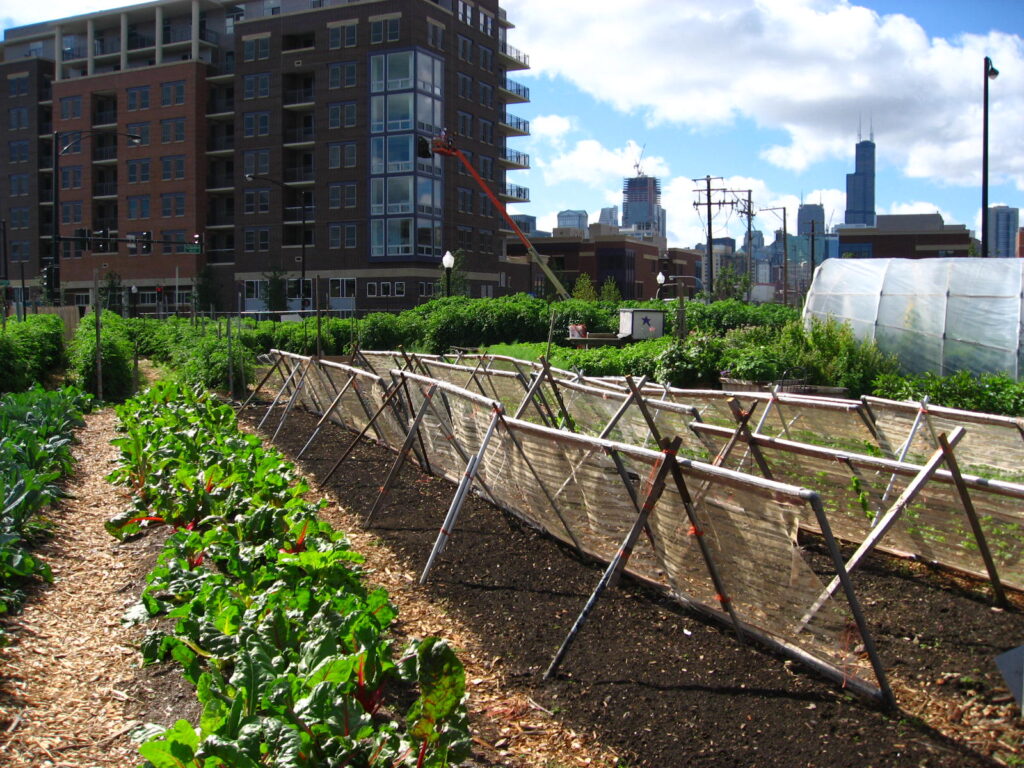The year 2020 brought about a lot of exciting trends from soil health to farm productivity, hemp to broadband internet. These are being discussed all over the world in agricultural communities as well as many debates to improve farm productivity, profitability and environmental sustainability. The quality of food, and being safe are two factors that have gained a lot of interest along with gaining the attention of general consumers.
Conventionally grown foods have the presence of pesticide residue, more nitrate, heavy metals, hormones, antibiotic residue, are less nutritious, and also contain a lesser quantity of antioxidants needed for good health. Now these disadvantages have led to the having more of organic farming from the past decade. Organic farming cultivates food products without the usage of chemical fertilizers, synthetic pesticides, growth hormones and antibiotics, owing to which nutritional value is retained making the product more healthy.

Common philosophy adopted by organic farmers is “ feed the soil and let the soil feed the plant”, which actually means start on building the health of the soil in your backyard garden, and you can reap the success yourself in a short while. Organic farming is a holistic production system based on proven practices, the basis of which relies on preventive strategies and soil health.
Seedlings can be planted in your organic garden which has compost-rich soil where there is sunlight for about 6 hours a day. They need to be planted thickly so that weed growth can be prevented. There could be some other plantings in spaces so that you make the most of your organic garden.
Some points to remember in backyard organic farming :
- Organic matter needs to be added to the soil regularly. Since crop rotation needs to be followed, grow legumes between your main crops. You can use vermicompost and poultry litter to enrich the soil.
- Organic farms usually have less pest problems as while growing tomatoes, grow some sweetcorn to attract pests and save your tomato plant. Pests can be removed in person or use neem extractions to reduce them.
- Weeds can be controlled by removing them by hand.
- The method of mulching is using dry leaves to cover the soil and also stop weeds from growing.
- Shallow tilling is a very useful method in backyard farming.
Let us start the steps to be needed to create a backyard organic garden.
- Start any time of the year for a gardening effort by choosing a site for your garden, buy containers, plant seedlings, build garden boxes, and finally make compost for your garden.
- Choose a well maintained 4ft by 4ft garden space where you can grow your vegetables that would be fresh.
- You can grow herbs in pots, boxes or buckets on a patio in the south-east facing window, that you can use for your soups or favorite dishes. Herbs like mint, parsley, garlic, onions, or even tomatoes could be grown.
- Compost pile is one of the important ingredients necessary for an organic backyard farm. You can fill your compost pit with dry leaves, weeds, grass clippings, old fruit and vegetable scrapings.
- Test the pH level of your soil by using pH test strips, with the correct being 5.5 to 7.0 for plants to thrive. Above 7.0 means soil is more alkaline – add more organic matter like peat moss or compost. If pH is less than 5.5, it means your soil is acidic – buy dolomite or quick lime to add to soil.
- Next you need to measure the soil’s drainage by making a pit and adding water in it. Leave for 24 hours and add more water and see the rate at which the water drops using a tape, with the ideal situation being 2 in per hour.
- Choose plants like tomatoes, peppers that can grow all through the year, and carrots and corn produce only once.
- Water your garden in the morning, since a cool temperature reduces the extent of evaporation which is not good for your plants.
- Weed your garden once every few weeks, using your hand, or scuffle hoe. You can sometimes try heat to control weeds in cracks, like a heat gun or boiling water to get rid of the weeds.
- There are many other creatures that help your backyard organic garden grow, like putting out some seeds for birds, adding compost to the soil to attract worms, or even plant alyssum, sunflowers, lemon balm and parsley to have beneficial insects visiting your garden.
Vegetables you can grow easily in your backyard organic farm at home :
Some tips and tricks of growing 10 easiest vegetables
# Chilli — This most important ingredient in an Indian kitchen can be grown by procuring seeds from dried red chillies at home, mix equal amounts of cocopeat, compost and perlite and put it in a small pot, soak it with a good amount of water overnight. Next day, press the seeds of chilli in the soft mud and cover it with mulch or hay. Daily water the seeds till the saplings appear, then when leaves appear transfer each sapling to a bigger pot, water daily till flowers appear, then reduce the frequency till the fruits of chillies arrive.
# Tomatoes — Tomatoes are used so frequently in salads to gravy, that growing them in your backyard would be wonderful. Prepare a potting mix of sand, red soil, compost, cocopeat and neem cake in a ratio 30:20:20:20:10. Then sow the tomato seeds in the mix with some distance apart and sprinkle water after sowing. Mulch the seeds with hay or dried leaves to create a semi greenhouse effect. Spray water every 2 to 3 days till the seeds sprout, and after a few leaves appear, transplant the saplings to a bigger pot, and fill it with sticks on the edges. Add compost once a week till flowers appear. Spay diluted neem oil in dish wash solution once on 15 days.
# Brinjal — The delicious dishes made from brinjal are numerous, you can handpick them for your recipe.from your garden for a fresh taste. The brinjal seeds need to be soaked overnight and sowed in well-drained soil. A potting mix here needs 30% soil, 20% compost, 20% cocopeat, 20% sand and 10% neem cake powder. When the saplings are about 5-6 inches tall, transplant them to a bigger pot with potting mix. You can reduce the amount of water after the plant is fully grown.
# Coriander — The fragrance of every dish is enhanced by a dash of coriander leaves ! It is easy to grow these tiny leaves that add aroma to gravies or dishes. Take some coriander seeds and slightly crush them with your hands and soak them in water overnight. Mix sand, red soil, cocopeat, neem cake and compost in equal quantity for the potting mix. Spread the seeds evenly and sprinkle water, after the seeds have sprouted, spray some diluted buttermilk once in 15 days. Too much water is not needed for coriander plants, Harvest when ready.
# Bitter Gourd — Growing this vegetable is so easy, although it is not a favourite of many. Soak the seeds overnight and sow them in twos in small pots. The potting mixture needs 30% red soil, 20% compost, 20% cocopeat, 20% sand and 10% neem cake powder, keep this mix watered well aside. Remove the saplings and transfer them with soil to a bigger pot. Now insert some sticks into the soil as bitter gourd is a creeper. The side stems need to be pinched till the creeper grows to a height of 6 to 7 feet. Pluck off the leaves near the base to avoid infection.
# Cucumber — This vegetable used all over the world in almost all cuisines is high on potassium and Vitamin K, can be used raw in salads, and is fresh when taken from a backyard garden. Soak the cucumber seeds overnight before sowing them. The potting mix should have equal quantity of each of these – compost, cocopeat, perlite and soil. Transfer the saplings into a bigger pot with the above mix carefully, expose them to good sunlight for 6 to 8 hours a day. Harvest the fruit when it is ready.
# Mint — Mint does not even need soil to grow as a few sprigs of mint from a fresh bunch you may have brought from the market are good to grow. Choose a thick healthy stem and make a cut at 15 cm along the length below the node. Remove all the leaves carefully, and put them in a glass of clean water. Keep them indoors and away from sunlight for a few days and you will notice that the cuttings will sprout new leaves, with roots growing too. These leaves are now ready to use or you can transplant them into a fresh potting plant.
# Spinach — This green leafy vegetable is a must in every backyard organic farmland as it is a powerhouse of iron, used in salads, pastas, sandwiches and much more. The spinach grows very fast too. The potting mix needs well loamy soil enriched with organic compost. Sow the spinach seeds gently in rows with 1-1.5 feet distance between them, soil should be covered loosely and watered well to germinate. When the leaves have appeared, space them 6 inches apart for proper growth. They need direct sunlight or partial shade. The leaves can be picked when you need them, and the leaves regrow until the end of the season.
# Radish — Radish is quite easy to grow at home, although radish is used in certain regions only. The potting mixture needs home made organic compost, and cocopeat. Sow the seeds making a dent in the soil which is 0.5 inch deep and a gap of 1 inch, allow them to germinate for a week, then separate the saplings with 2-4 inches gap. The potting containers should be around 20 liters with vermicompost being added at regular intervals and watered regularly.
# Capsicum — Capsicum has become an integral element of the Indian kitchen in recent times, and it is also grown in urban gardens. The potting mix needs cocopeat, vermiculite and neem cake, sow the seeds in late winter, spring or just before summer as it grows well in moderate temperatures. You can use a seedling tray to sow the seeds and cover the tray with a plastic wrap so as to not allow moisture from escaping. After the seeds germinate which is around 2 weeks, you can keep the tray in the sunlight area with the plastic removed. Transplant the saplings once the true leaves are out,add some more potting mix, water at scheduled time and use water soluble fertilizer once in 2 weeks. Capsicums need 60 to 90 days to grow fully.
In order to maintain a healthy backyard organic farm garden, you need to start with the organic matter for the soil such as manure, peat moss, compost which is the best option since it contains decayed microorganisms of previous plant life.







